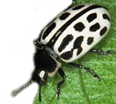Topics overwiew | |
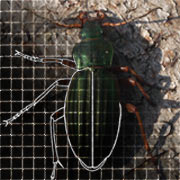 |
Christoph Benisch, 2007
Beetle morphologyThe morphology of the beetle follows a quite uniform scheme. In the diagram on the left side the basic morphology of a beetle is shown (Carabus auratus, dorsal view). A typical characteristic of beetles are the hard elytra. The scientific (Latin) name of the order is Coleoptera, which translates to "sheathed wings". Like in all insects, the body of the beetle is segmented in three main parts: Head (Caput), thorax and abdomen… more… |
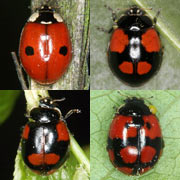 |
Christoph Benisch, 2008–2021
Variability of elytral color patterns in CoccinellidaeMany ladybird species (Coccinellidae) exhibit a remarkable variability of elytral color patterns within one and the same species. Especially for newcomers, the determination of ladybirds can be complicated due to the variability of the species. The polymorphism of numerous Coccinellid species, especially Adalia bipunctata, had been investigated extensively and the results have been published in numerous articles. The correlation between color and chance of survival during hibernation… more… |
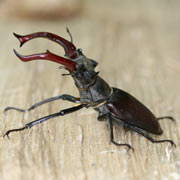 |
Klaas Reißmann, 2007
The stag beetle Lucanus cervus (LINNAEUS, 1758)With its bodylength of up to 80 mm, the distinctive stag beetle is the largest species of the German beetle fauna. Most people know the beetle, a few may even have found one themselves. Due to the large, eye-catching mandibles of the male, the beetle's vernacular name has been derived from the stag, e.g. as "stag beetle" in English, or "Hirschkäfer" in German. Nowadays not too many people have ever seen the stag beetle in the wild. In the Red List of the German beetle fauna… more… |
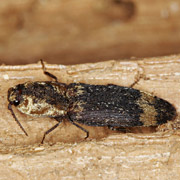 |
Klaas Reißmann, 2010
The Click beetle Lacon querceus (HERBST, 1784)The Click beetle Lacon querceus is probably one of the most beautiful representatives of the family Elateridae, but at the same time one of the rarest species of the German fauna. Its natural range stretches from the Pyrenees in the southwest over France, Central Europe, and the northern part of Southern Europe to Western Siberia in Russia. Throughout its whole range the species is not widespread, but occurs only insular and isolated… more… |
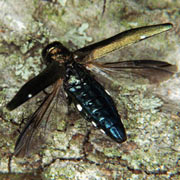 |
Klaas Reißmann, 2010
The Jewel beetle Agrilus biguttatus (FABRICIUS, 1777)In Central Europe as well as in Germany the genus Agrilus comprises a large number of species, which are often very similar and difficult to determine, especially the females. The 13 mm large oak buprestid beetle Agrilus biguttatus, in the US called oak splendour beetle, is the largest species of the genus Agrilus in Germany and one of the few that can be easily determined. Confusion is possible only with… more… |
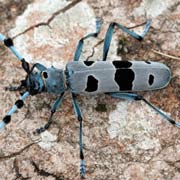 |
Klaas Reißmann, 2010
The Rosalia longicorn Rosalia alpina (LINNAEUS, 1758)The Rosalia longicorn is probably one of the best known beetles of the European Fauna, not only due to its beautiful black and blue coloration and the striking black tufts of hair on the central segments of the antennae. With a body length of up to 40 mm it is also among the largest beetles of our fauna. Due to its dramatic decline in the recent decades, Rosalia alpina has moved into the focus of public attention. The intensive use of the beech forests… more… |
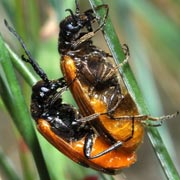 |
Hans Bahmer, 2017
The blister beetle Stenoria analis (SCHAUM, 1859)The blister beetle Stenoria analis is a brood parasite that has been shown to develop in the nests of ivy bees. After mating, females usually deposit their eggs on plants near ivy-bee colonies. The larvae hatching from the eggs are called triungulins and are characterized by their three-clawed feet (hence the name). It allows the beetle larvae to cling to male bees and to spread to the females during mating. With the females, the triungulins get into the bee nests. There they develop at the expense of the bee offspring to the new beetle generation… more… |
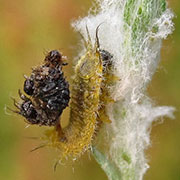 |
Tina Schulz, 2021
The cudweed tortoise beetle Cassida seladonia GYLLENHAAL, 1827The cudweed tortoise beetle Cassida seladonia is an oligophagous species, especially of cudweeds, less of Helichrysum and Gnaphalium, which has so far only been found in very few places in Germany and is classified in category 1 on the red list, i.e. is "threatened with extinction" [RHEINHEIMER & HASSLER, 2018]. Its habitat, the Kugelfangtrift – including the adjoining glider flying area, which is somewhat more nutritious &ndash is a 60 hectare landscape protection area in Hanover-Vahrenheide. Acidophilous grasslands prevail… more… |
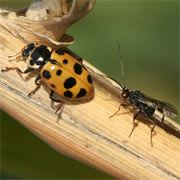 |
Klaas Reißmann and Christoph Benisch, 2013
The ladybirds (Coccinellidae) of GermanyThe ladybirds (family Coccinellidae) are most probably the best known family of the beetles at all. Who does not know them, the ubiquitous seven-spot ladybird Coccinella septempunctata or the two-spot ladybird Adalia bipunctata? Ivory carvings from the Magdalenian prove that they were considered as lucky charms since the early history of mankind. Every child knows the myth… more… |
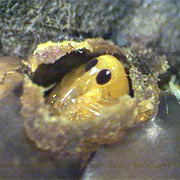 |
Hans-Joachim Gießmann and Christoph Benisch, 2011
Observations on the beetle fauna (Insecta – Col.) of Scotch BroomSince several years, the lead author of this paper has observed a red-flowered shrub of Scotch Broom (Cytisus scoparius) in a gravel pit located close to the highway A20 near Neukloster (Mecklenburg-Vorpommern, Nordwestmecklenburg district). In fall 2008, a few ripe yet closed fruit pods of the shrub were collected for the first time to harvest the seeds. Upon opening the pods… more… |
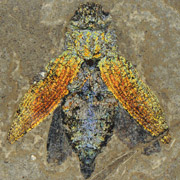 |
Christoph Benisch, 2010
Phylogeny of the beetlesIn evolutionary terms, beetles are an old order. The oldest fossil beetles are known from the Permian, a long time before the dinosaur ruled the world. Since these days, the beetles evolved into the most speciose order in the animal kingdom. Worldwide, more than 350,000 species have been scientifically described. That is, 40% of all scientifically described insects and 25% of all described animals are beetles. Even today, every year a large number of new species is discovered… more… |
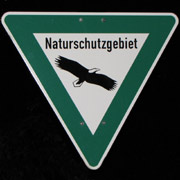 |
Maik Hausotte and Christoph Benisch, 2009–2010, 2012, 2015
Federal Nature Conservation and Species Protection Legislation in GermanyIn Germany, nature conservation and species protection are defined legally binding in the Federal Nature Conservation Act (BNatSchG) and in the Federal Regulation for the Protection of Species (BArtSchV). According to this legislation, it is forbidden to collect protected species as well as to collect any species within nature protection areas without official exemption certificate… more… |


